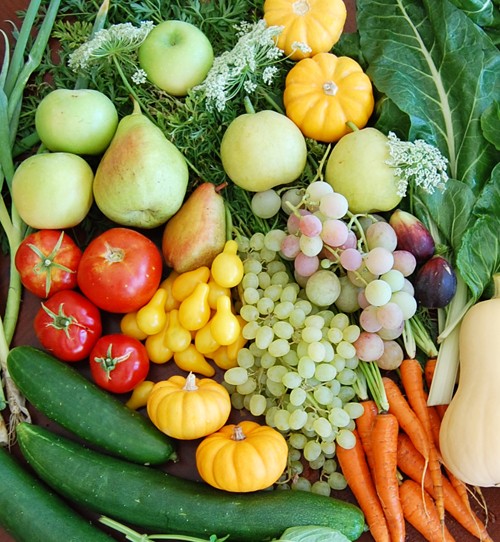
Do you want to grow a large garden that will provide your family a major percentage of your fresh fruits and vegetables? It’s easy to spend a lot putting in a garden. Here are some ways that you can do it for less:
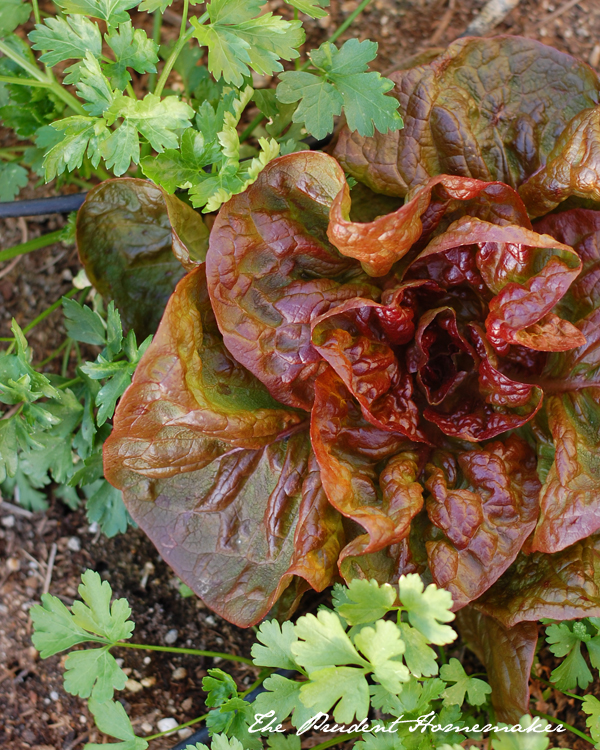
Grow from seeds
Seeds are much less money than buying plants at the nursery.
Just like shopping for anything else, however, it pays to shop around for seeds.
The cheapest seeds I’ve found so far are at Walmart. They have small packages of 20 cent seeds. These are great if you only want to plant a few, but they sell out quickly.
They also sell Burpee seeds for $1 and $1.50 a package. These are specially priced for Walmart (it says Walmart on the package). Target carries Burpee seeds too, without a special logo, for $.99 to $2.19 a packet. Local nurseries carry these same seeds without the Walmart logo—for about $1.75-$2.50 a packet.
You can also order online. There are many companies to choose from.
When choosing, keep in mind that some companies offer small quantities of seeds, and some offer larger quantities.
For some fruits and vegetables, you may get more seeds just by choosing one variety of plant over another.
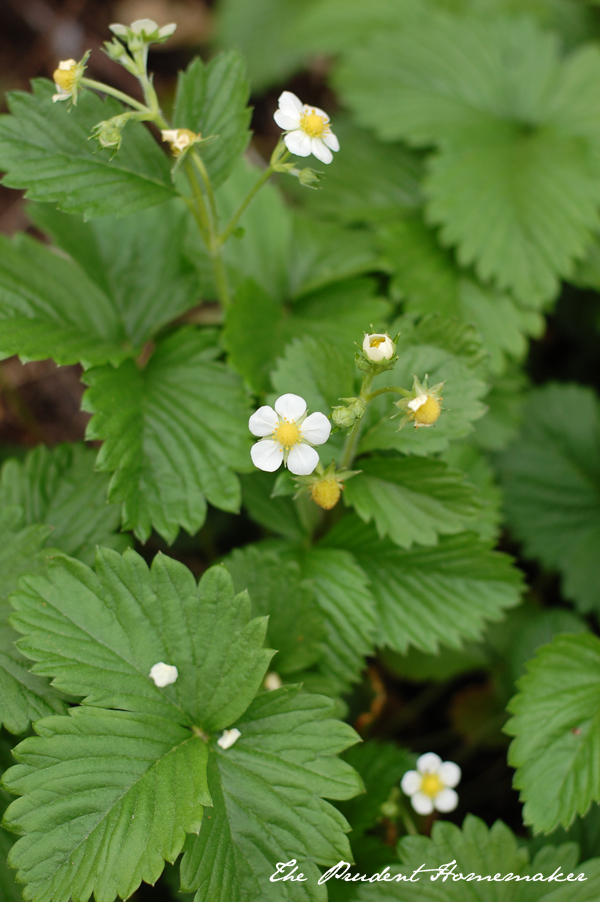
For example, if you want to grow strawberries from seed (and there are some varieties that grow from seeds and not runners) you can order Fresca Strawberries: 20 seeds for $3.95, or you can order Alpine Strawberries from the same company: 1000 seeds for $3.55.
My own experience has been that those plants that give you more seeds for less tend to grow more easily and abundantly than the seeds that come with just a few seeds per packet.
Another advantage of growing from seeds is the ability to grow more varieties of fruits and vegetables than your local nursery or local store can provide.
If you need to start your seeds indoors and do not have money for containers, use empty plastic containers from sour cream, margarine, milk jugs cut in half, etc. If you are living on your food storage and do not have these things,
ask a friend or neighbor to save their extra containers for you.
You can also make starter containers from newspaper.
If you don’t get the paper, ask a neighbor who does to save some for you.
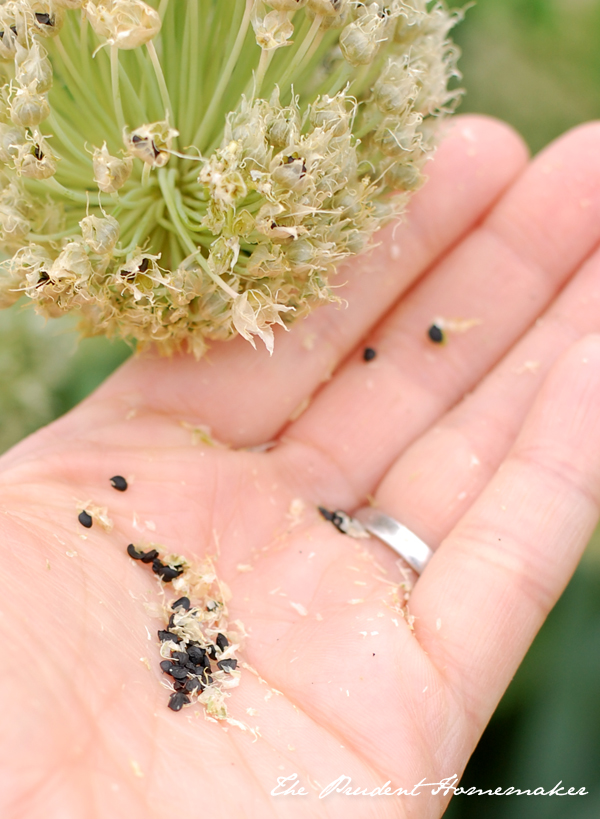
Collect your own seeds
Your seed expense can be smaller next year if you don’t have to buy any seeds.
You can do this by growing heirloom and open-pollinated varieties, and collecting their seeds for next year’s harvest.
To learn more about saving seeds, check out
In case you are wondering what heirloom and open-pollinated seeds are, here is a brief definition:
Open pollinated seeds are seeds which produce offspring just like the parent plants. Open-pollinated seeds can be harvested and saved to plant the following year.
An heirloom plant variety plant is one that has been kept by familes and handed down from generation to generation.
An heirloom plant is grown from open-pollinated seeds; therefore, it is not a hybrid and has not been genetically modified.
You can download a free printable seed packet to use for storing your seeds by clicking on the picture of the child below:
Here are some companies who sell heirloom and open-pollinated seeds:
John Scheeper’s Kitchen Garden Seeds
Transplant Your Thinnings
One of the hardest things about thinning your garden is the feeling that you’re wasting what is growing. However, thinning is neccessary in order to have good sized fruits and vegetables.
But if it grows in the ground, it doesn’t have to be wasted.
Instead of just pulling up the plants that are growing too closely together, use a narrow hand shovel to carefully lift the seedlings that you would normally toss. Carry them on the shovel to another spot in the garden and replant them (with the correct spacing in between).
In order for this to be successful, there are a few things you need to do:
1) Transplant in the evening right before dark.
The thinnings can settle in their new surroundings best when the weather is cool. If you transplant them in the heat of the day, they will wilt and die.
2) Water the area well.
Water the place where you will be moving the thinnings before you move them, so that the ground is nice and moist, deep enough for the roots to be damp immediately.
Then, water again after planting.
3) Be careful to get all of the roots.
Dig carefully, and allow a litle dirt to cling to the roots so that you don’t distrub the root hairs much. If you need to seperate plants, do so very tenderly and slowly.
I have succesfully transplanted lettuce, carrots, radishes, turnips, artichokes, cucumbers, basil, chamomile, parsley, cilantro, johnny jump-ups, larkspur, and vincas this way.
You can also use this method to move seedlings that have self-sown in the wrong place.
Compost
Dirt is important–so important that it’s worth the most expense in your garden. Good dirt means higher yields of fruits and vegetables.
It seems awful to spend money on dirt, though.
As with anything else, shop around. This is a case where your local nursery may be cheaper than the discount stores. Buy pre-bagged, sterile manure (to avoid weed seeds), and compost/mulch to add to your soil.
Composting your own kitchen scraps and grass clippings, though, is the least expensive way to keep from buying compost each year. There are many methods of composting. A Google search will keep you busy for a long time. This is a case where “waste not, want not” actually increases your garden yield!
If you want an easy, simple way to compost that requires nothing more than a shovel (or even a trowel), you can try trench composting.
If you have $1 to spend on a garden, spend 90 cents on dirt and 10 cents on seeds, and your yield will be so much higher!
Read an excellent piece about dirt in the garden here.
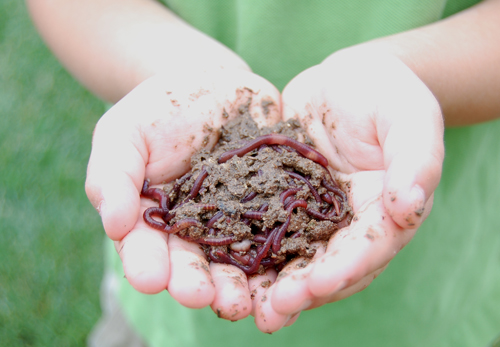
Worms
Earthworms are important. Earthworm castings are expensive. Earthworm castings cost much more than compost. When you open the bag, it’s lovely BLACK dirt, and it actually smells good!
However, there’s a cheaper way.
Having worms in your garden will provide constant nourishment and castings to your garden, without having to buy tons of earthworm castings.
You can order worms online, buy them locally at your nursery if they sell them, or buy some from your local fishing shop (which for some is Walmart). Walmart has them for $4.16 (they’re by the guns, in case you’re wondering). This is less than buying a bag of castings, and they will quickly multiply.
I bought worms only once from the nursery. They even happened to be on sale that week. Had I known about Walmart, I could have saved myself the drive and the higher price.
It was well-worth getting some worms, though. Our hard desert soils here are too dry for worms the way they are, but once amended (and kept watered), they are ready for them. If you have raised beds, you can add worms to the beds.
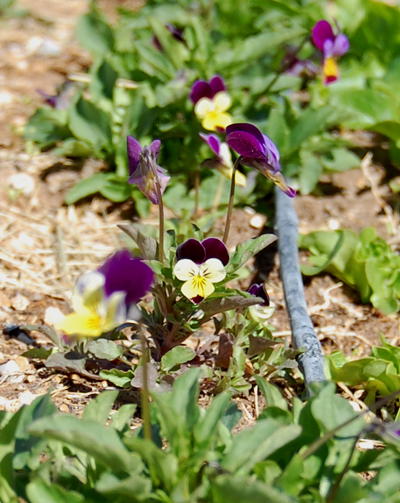
Install Drip Irrigation
That little black tubing next to flowers in the picture above is our drip irrigation. When set to come on (through a sprinkler system timer), water only drips out of the holes right next to the plants that I want to grow. This cuts down on water usage.
There are a few different ways to install drip lines. The least expensive line is the kind with the pre-drilled holes. They come with holes every 12 inches apart or every 6 inches apart. I buy the 6 inch kind and it is easy to know where to plant and space my seeds.
If you rototill the soil, you can lift up the drip lines and move them to one side when it’s time to till. In my garden, I cannot rototill because it would break up tree roots, so my drip lines stay put. I just scratch fertilizers and mulches into the soil with a hand trowel.
There are less weeds to pull with drip irrigation, because water goes right to the plants.
In areas where there is little rainfall, drip irrigation saves time and money (for water). There is no overhead watering, which helps to prevent some funguses from developing.
Shop around and watch the sales
If you want to put in fruit trees, you don’t have to pay full price. During spring and fall, nurseries often advertise fruit trees for sale. (Fall and winter planting of fruit trees helps the tree to establish a good root system over the winter before the next spring. I have had great results with fall planting of fruit trees). Usually our nursery has fruit trees on sale for $5 off per tree.
Compare prices. I found that Lowe’s was about $10 more per tree than my local nursery’s regular price.
If you decide to buy vegetable starts, also watch for the sales.
Compare and see what will work best for you. A 4 inch potted tomato plant may go on sale for 99 cents at the nursery, but if the 6 pack of tomatoes is $2.24, it’s much less money than the 4 inch plants if you’re getting 6. Usually, they are not that different in size, either!
Get the catalog
Many mail order companies have great coupons on their catalogs. Some give bonus seeds or coupons to early orderers. Gardens Alive offers $25 off a $25 order for first time customers if you use their catalog coupon early in the year. Burpee and others usually have a coupon for a certain amount off your order for early orders, too.
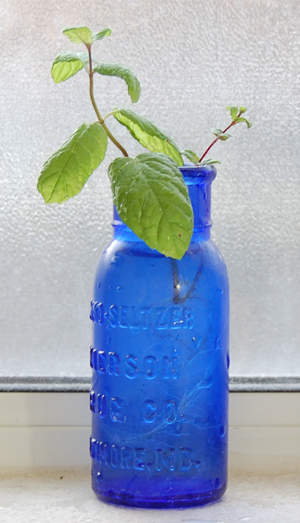
Grow from cuttings
Many plants will grow from cuttings. Mint is an easy plant to grow from cuttings.
Ask a friend or neighbor if you can have a cutting from a plant that you like. Stick it in rooting powder and watch it grow! Not everything will grow this way, but for those things that do, you can have plants for almost nothing (a container of rooting powder will last a while).
Not everything even needs rooting powder (mint will root in water in 2-3 days) !
How to propagate some edible plants from cuttings:
Pomegranates (these will also grow from seeds)
Many herbs and plants can be propagated by “layering.” You bend down a branch and pin it to the ground (you can use a bobby pin), and bury the pinned down part with dirt. Keep this spot watered, and in a few months (and sometimes less) when a good root system has been established under the pinned spot, you can cut the branch off from the original plant, and dig up and move your new plant. This is a great way to help a friend expand her garden as well.
Some herbs that can grow this way are: Rosemary, mint, thyme, lavender
For fruit trees, you can also graft trees to seedlings or existing trees to have new varieties.
You can make new seedlings from suckers and grow benchgrafts by grafting with scionwood.
You can graft in the winter with scionwood and in the summer with budwood. Here is a little info about budwood grafting.
Participate in seed exchanges
Do you have more seeds than you need? Do you wish you could swap with someone else for something else that you don’t have?
Seed exchanges provide a good way to get seeds for the cost of an envelope and postage.
You can share seeds with friends and family.
You can also participate in large seed exchanges.
Feel free to use the downloadable seed packet to share seeds with others.

